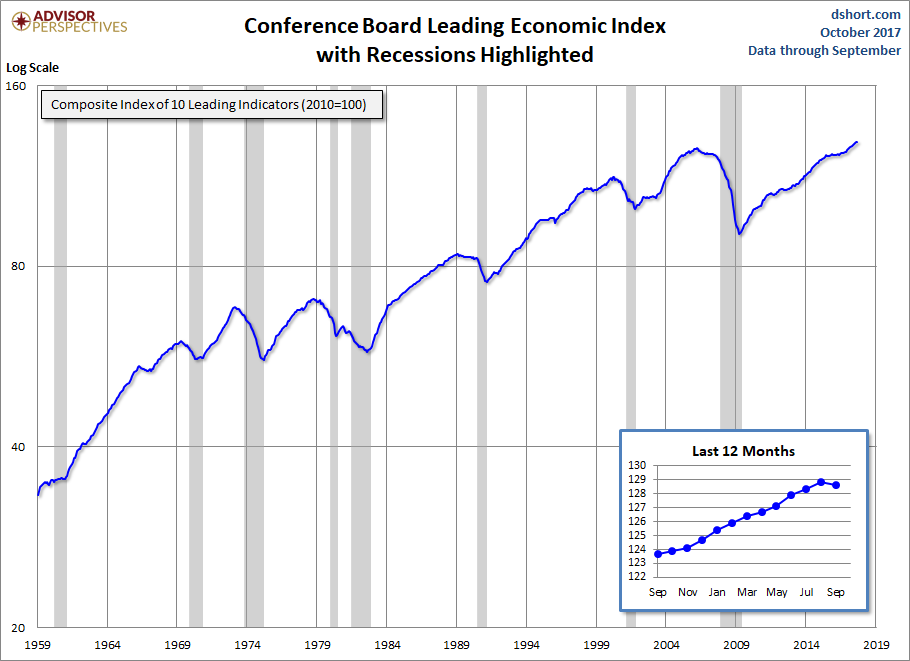The latest Conference Board Leading Economic Index (LEI) for September decreased to 128.6 from 128.8 in August and saw its first decline in over a year, partially due to the impact of the hurricanes. The Coincident Economic Index (CEI) came in at 115.7, up fractionally from the previous month.
The Conference Board LEI for the U.S. declined slightly for the first time in over a year. Negative contributions from initial claims for unemployment insurance (inverted), building permits and average weekly manufacturing hours more than offset the positive contributions from the ISM® new orders index and the financial components. In the six-month period ending September 2017, the leading economic index increased 1.7 percent (about a 3.5 percent annual rate), slower than the growth of 2.2 percent (about a 4.4 percent annual rate) during the previous six months. In addition, the strengths among the leading indicators became somewhat less widespread. [Full notes in PDF]
Here is a log-scale chart of the LEI series with documented recessions as identified by the NBER. The use of a log scale gives us a better sense of the relative sizes of peaks and troughs than a more conventional linear scale.

For additional perspective on this indicator, see the latest press release, which includes this overview:
“The US LEI declined slightly in September for the first time in the last twelve months, partly a result of the temporary impact of the recent hurricanes,” said Ataman Ozyildirim, Director of Business Cycles and Growth Research at The Conference Board. “The source of weakness was concentrated in labor markets and residential construction, while the majority of the LEI components continued to contribute positively. Despite September’s decline, the trend in the US LEI remains consistent with continuing solid growth in the US economy for the second half of the year.”
For a better understanding of the relationship between the LEI and recessions, the next chart shows the percentage-off the previous peak for the index and the number of months between the previous peak and official recessions.













Leave A Comment